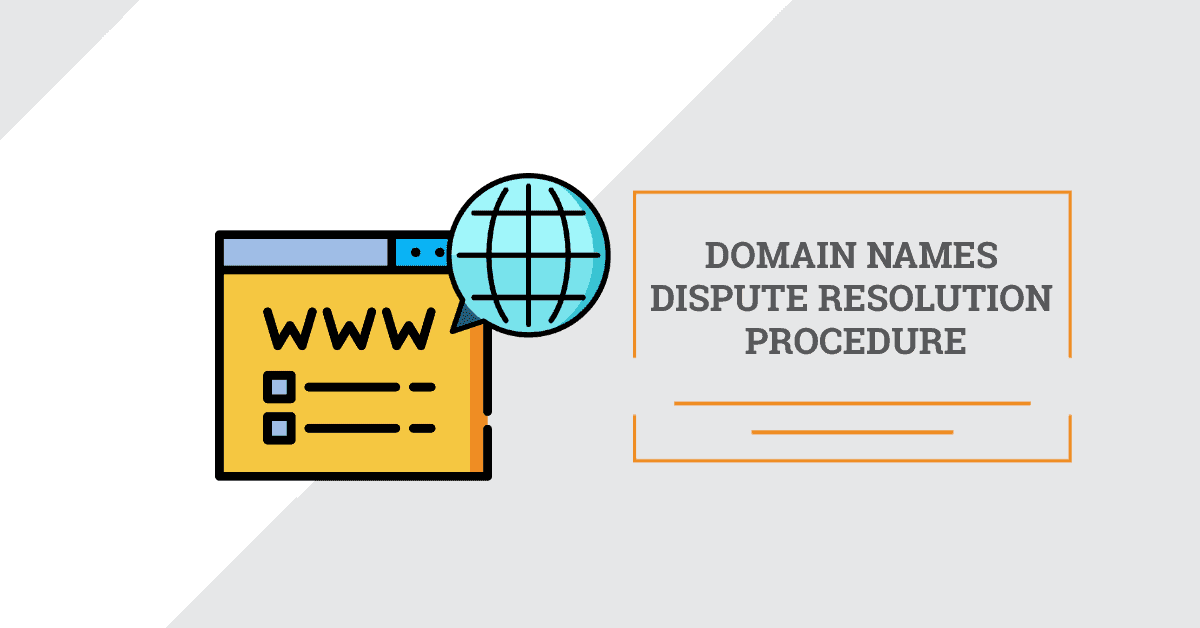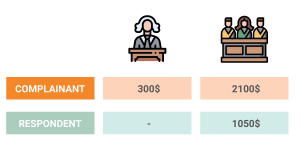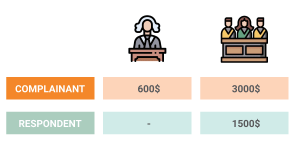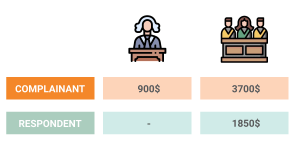
Guide on domain names dispute resolution procedure: insights
Just imagine: you have registered a domain name www.blabla.com alongside the trademark “blabla”. Once, while trying to find this website on the Internet you unexpectedly stumbled on www.bla-bla.com site, which is not yours. The abovementioned case amply demonstrates inappropriate and illegitimate use of the domain name. Nowadays, such disputes are well-known among domains owners. Due to the fact that resolution procedure is considered to be one of the time- and cost-efficient mechanisms for such controversies, I would like to outline its five main stages:
1)Submission of complaint to a dispute-resolution service provider
Once you realized you want to either cancel or transfer a domain name from the respondent’s control to yours, the first step of submitting electronically a complaint with all its annexes to the dispute-resolution provider (Arab/Asian/Canadian/Czech/WIPO Centres) should be taken. The specific requirements for filing a complaint are set in clause 2 of the UDRP Rules.
Do not forget to pay the fee within 10 days; otherwise, the complaint will be deemed withdrawn and the proceeding terminated. If all formal requirements are met and no deficiencies are found, the World Intellectual Property Organization (WIPO) Arbitration and Mediation Center will forward its official copy by email as well as a hardcopy written notice by post to the respondent.
2) Filling a response to the complainant by respondent
As the entity or person, the claim was raised against received the complaint, a countdown of 20 calendar days to write a response has started. The duration might be extended to 4 days automatically if such request were provided by one day before the expiry of the deadline.
If there is still not enough time to complete and send a response to provider, in exceptional cases the period may again be extended by written stipulation between parties of the dispute. Sometimes complainants hope not to receive the response because then, as it is stated in the UDRP Rules, the Panel will decide the domain name dispute based upon the complaint.
3) Appointment of an Administrative Panel
There is always an option to decide whether you want your proceeding to be heard by independent Panelist or mutual three-person Panel (more people are engaged – more money you shall pay 🙂 ). If both Parties agreed to have only one Panelist, the appointment will be assigned within 5 days after receiving a response, and the full amount of fee rests with the complainant. If either the complainant or respondent wants to have 3-member Panel, the Center will appoint a 3-person Panel.
However, in case of complainant’s request, the fee shall be entirely paid on its own. Contrary to the complainant, the respondent request is cheaper as the last will be obliged for the only one-half payment fee.
Also, in doing three-person Panel, complainant and respondent have a right to appoint one candidate each. The Presiding Panelist will be chosen based on the preferences of both parties of the dispute. The table below may help you easily deal with the underlying fee issues. Pay attention that these prices are applicable only to the cheapest Czech Arbitration Court which unexpectedly decided to make a temporary discount 🙂
1-5 domain names involved in a complaint:

6-10 domain names involved in a complaint:

11-21 domain names involved in a complaint:

Is it possible to open an administrative proceeding with more domains than 21? For sure, yes, it is. The prices are not so welcoming as these ones. If you are not scary to see them, follow that link for this Court.
4) Decision issuance and its notification
As the Panel is assigned, this is the right time to issue the long-awaited decision. The time limit is set up to 14 days from the day of Panel appointment. During this period Panel is obliged to send its decision to the WIPO Center. After that, the Center will notify decision parties, ICANN and a relevant register of the dispute within 3 days after receipt.
5) The implementation of the decision
Once the decision is issued, it shall be implemented. Logically, isn’t it? The Panel has only two options to resolve the dispute:
- to cancel domain names;
- or transfer them to a complainant in a case concerned.
If you do not want to wait until the end of the dispute resolution procedure, a dispute settlement procedure may be applied:
- more consequences might be addressed;
- time will be saved;
- and complainant’s payment might be partly refunded.
A detailed description of its application and implementation, as well as challenges which might happen during its procedure, will be described in my next article.
Taking into account the above-mentioned information regarding the domain names disputes procedure, I would like to highlight 3 reasons that might persuade you to initiate the proceedings in order to save and protect own rights on the domain names, owner of which you are.
-
Time
As I already mentioned it before, UDRP disputes are time-saving. The period to receive a decision after a complaint has been filled is no more than 60 days in total. For some companies, especially those that do need to return justice and its clients, this period is quite suitable since the damages caused by illegitimate use of the domain name will not be so high as it could be in case of 1-year dispute procedure. Therefore, if saving your clients, money and time are reasons that prevail while doing business, do not be afraid of applying complaint to the WIPO.
-
Money
Clause 3 of the domain name dispute resolution procedure provides the fees information which applies to the cheapest Czech Arbitration court. Especially, its prices are discounted until the end of the year.
Moreover, this procedure provides with the opportunity to refund the paid fee in case the termination of the proceeding (because of a settlement agreement or administrative deficiencies during resolution procedure) before the Panel has been appointed. Many companies do really appreciate their profit from the functioning of the site, thus 300$ of fee payment is nothing for them comparing to lost profit.
-
Additional terms
Once, I mentioned that settlement procedure might be applied by parties in order to settle the domain names dispute. The main advantage of its procedure is a possibility to negotiate additional terms in the agreement. In particular, besides transferring or cancelling domain names, the parties may agree to terminate the proceeding towards one or several domains, to pay damages for such cybersquatting or even to allow using such domains for a designated time.
What does all that mean?
Considering the information stated above, the domain names dispute resolution procedure does not require to put a lot of efforts for justice has been served. In addition, positive side effects are worthy of being implemented.
However, if you do not have enough time to bring your case into the court, just contact our lawyers – they for sure know what to do! 🙂

